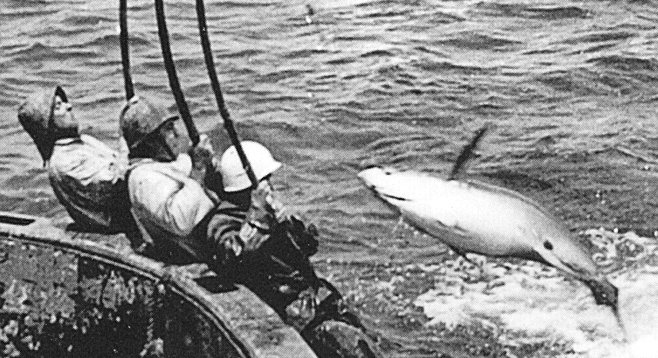By Emily Vidovich, George Washington University class of 2019 and founder of @smallstepsforearth
“If we humans are to make a successful, sustainable place for ourselves in the world – whether our population holds steady or doubles – it is mandatory that we establish effective food sources that minimize impact to crucial natural systems and maximize efficient use of food energy.” –Sylvia Earle
San Pedro is a fishing town at its heart. After World War II, my Croatian-born grandparents, at the time teenagers who had spent a portion of their childhoods in refugee camps, were among the multitude of immigrants who settled in this port town to make a new life for themselves, supported by work on the seas and in the canneries. My Nono was a tuna fisherman, often gone for weeks at a time in pursuit of the agile fish that was the backbone of the town, represented by StarKist’s jovial Charlie Tuna mascot.

Since the time when my Nono was a fisherman, technology has advanced exponentially, making it possible to catch an inconceivable amount of fish. Sylvia Earle, renowned ocean exploration pioneer and conservationist, explains in her book Sea Change that population increase and the rapid advance of technology have exponentially increased humanity’s consumption of resources to a level that nature was not designed to cope with. Humans are taking from the seas faster than the seas can recuperate.
Today, three billion people worldwide depend on seafood, both wild-caught and farmed, as their main source of protein, according to the World Wildlife Fund. This results in approximately 109 million metric tons of fish being taken from the ocean annually. Earle warns that, “the right number for us to remove to ensure the sustained health of a wild population might be something very close to zero,” explaining that it is incautious of humans to remove major portions of ecosystems and expect them to recover while high levels of fishing continues.

On a recent tour of the future AltaSea campus in San Pedro, I found myself inside port warehouses that once served as a breakbulk shipping facility prior to widespread terminal automation. It will soon be transformed into spaces where companies concerned with the ocean’s future will congregate to innovate. Just as these historical buildings are being re-purposed to allow them to play a part in creating a better future, so can the fishing industry be reworked to allow it to become an asset to creating a healthy, sustainable world, instead of an obstruction. A shift of practice and priorities will not only ensure that fish can continue to play their vital role in ecosystems and on dinner plates for millennia to come, but will also create diverse new job opportunities.
Cultivating sustainable aquaculture stocks to reduce the amount of fish that are wild-caught could prove to be a vital component of designing a fishing industry built to sustain the future. At AltaSea, Catalina Sea Ranch is already growing bivalves, two-shelled ocean organisms such as mussels, and harvesting them as an ocean crop. Obtaining seafood from aquaculture is the oceanic equivalent of picking grapes from a vineyard, where you can control the crops and replenish their numbers, instead of harvesting wild fruits and expecting them to regenerate themselves. When done right, aquaculture allows the opportunity to obtain seafood without impacting ocean ecosystems beyond the point of repair.
However aquaculture as it currently exists is not a perfect solution; salmon farms are polluting wild waters in British Columbia, and shrimp farms in Asia have destroyed a significant portion of vital mangrove habitats. When poorly managed, aquaculture can pollute waters and destroy ecosystems. But the issues with aquaculture seem to be a matter of bad practice more than failed concept. No form of animal agriculture in existence today is perfect, because industries emphasize high profit yields at the expense of animals and the environment. As aquaculture expands, it is crucial that sustainability, ethical practice, and health regulations are prioritized.
In order for this to happen, humanity needs to recognize that eating animals, whether from the land or sea, is a privilege, not a commodity, and exploiting other species throws the world off its natural equilibrium and has a lasting impact on the planet. We also need to acknowledge that healthy oceans are a necessity for all life on earth, since photosynthetic ocean organisms create approximately 50 percent of the oxygen in the atmosphere while sucking down carbon dioxide. The more we learn to understand and appreciate the oceans, the more we will realize how our daily habits determine their fate, and consequently, determine our own, giving us the motivation needed to create a sustainable relationship with the ocean.
